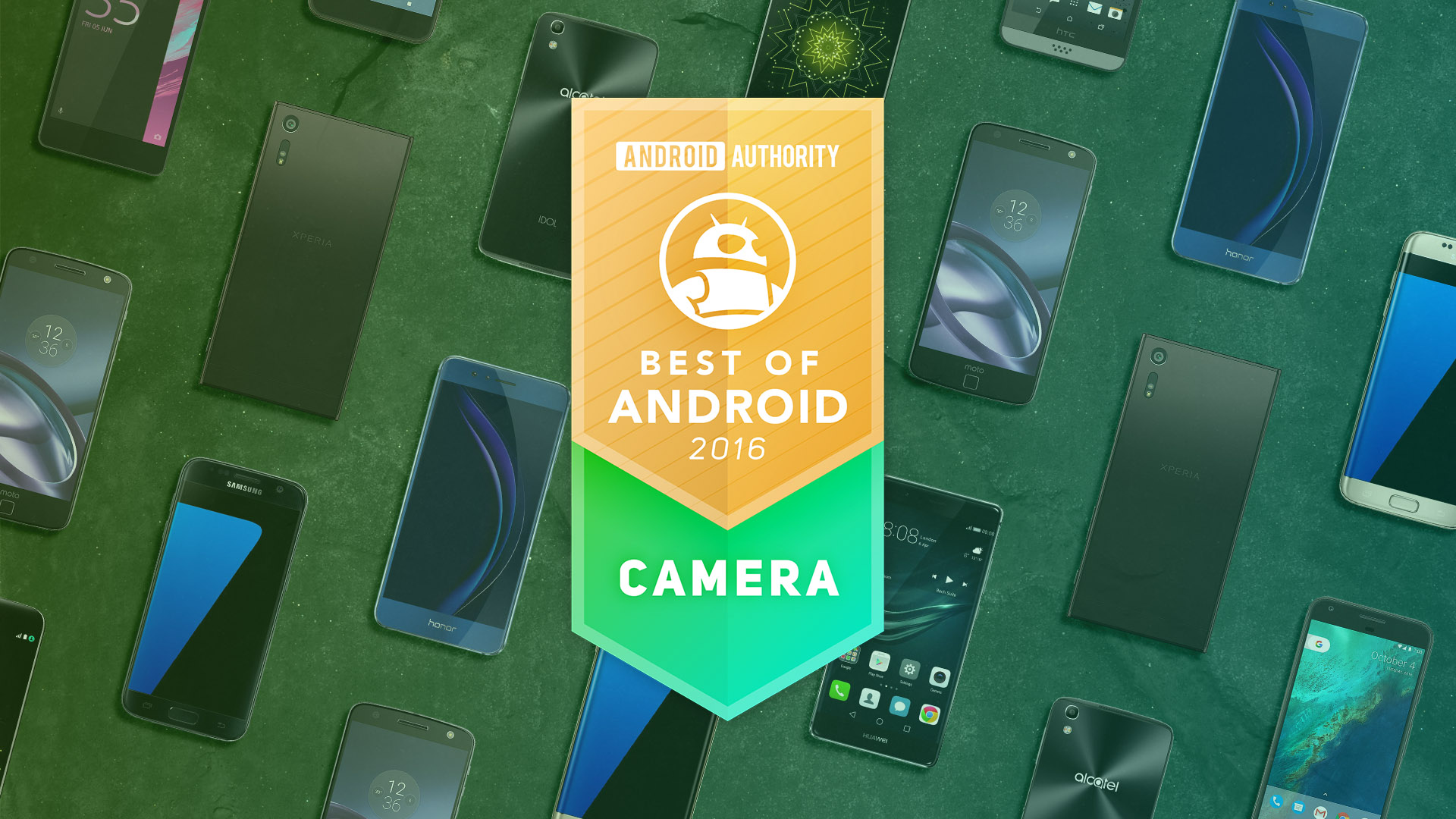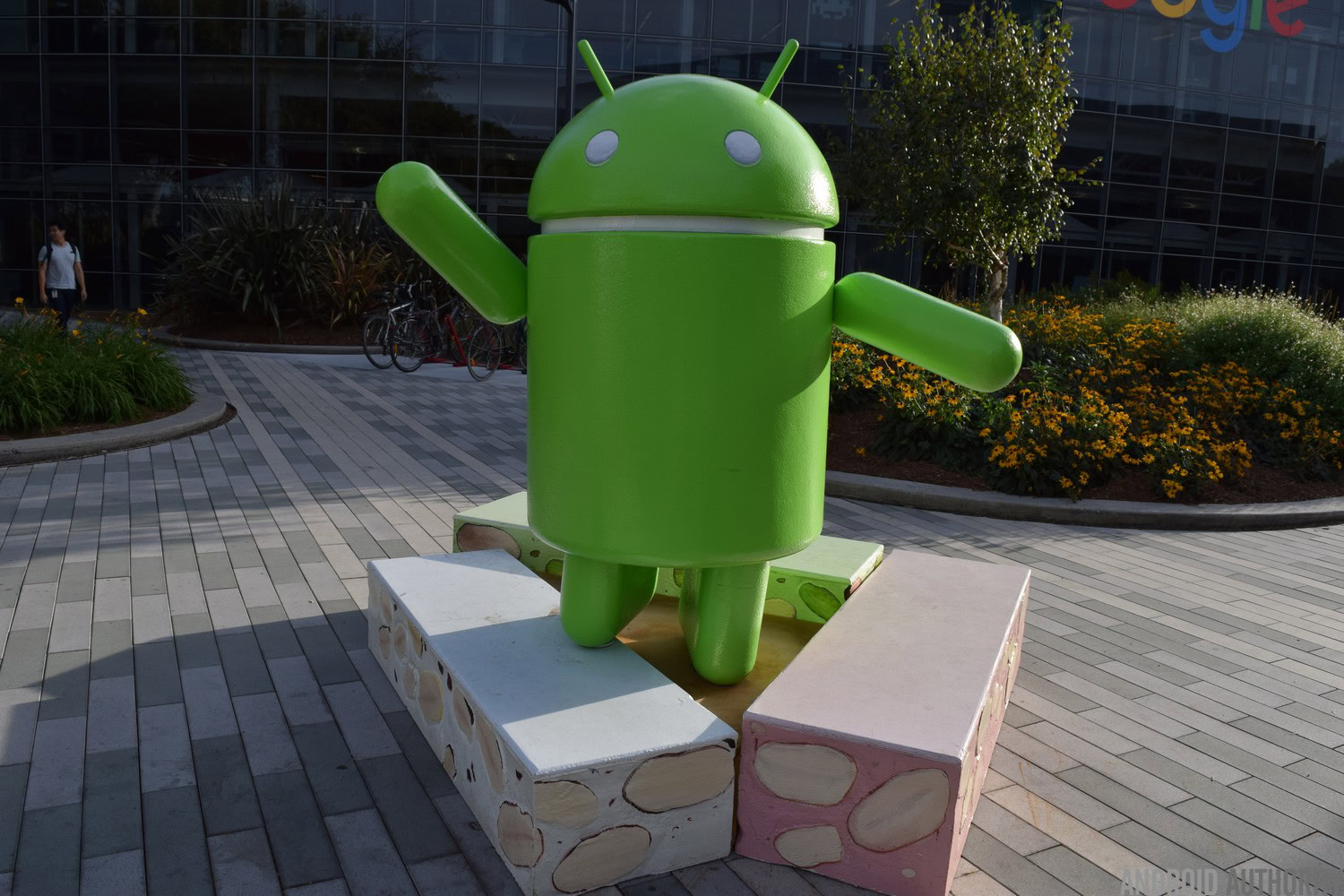Affiliate links on Android Authority may earn us a commission. Learn more.
Best of Android 2016: Camera

What is Best of Android?
In Best of Android, we aim to answer the single most important question that we get asked every day: what's the best Android phone you can buy right now?
Looking at 2016, here are the 10 phones we feel make up the best currently available on the market from each of these manufacturers
- Google Pixel XL
- HTC 10
- HUAWEI Mate 9
- LG V20
- Moto Z Force Droid
- OnePlus 3T
- Samsung Galaxy S7 Edge
- Sony Xperia XZ
- Xiaomi Mi 5
- ZTE Axon 7
Check out the rest of this year's edition and find out more here; Best of Android. Thanks for being a part of Android Authority!
We have already talked about the best displays, audio, battery, and performance on Android devices. Now it’s time to move into one of the most important factors when buying a new phone – the camera.
This year’s top smartphones vary in features, megapixels, aperture and more. They have one thing in common, though: the argument that the camera on each phone is outstanding. But which of these is the best? That’s a tough question to answer, but we have put the top smartphones to the test and are ready to give you more details.
First let’s talk about our testing. We have taken 20 sample images from each device listed above. 5 of these were shot under low-light circumstances, another 5 in low-light using flash, 5 in HDR and 5 in a well-lit environment. We used the same amount of lighting and the same 5 subjects for each set. In addition, the team is analyzing these shots at 100% crop, just to get closer to all the details.
After this, it was a matter of comparing them all. Want to see how the results came out? Let’s dig right in.

Low-light without flash
This is where a phone’s camera (or any camera, for that matter) is put to the real test. Ruining a photo is simple under low-light circumstances. You have to consider the ISO will likely be high, which can cause plenty of digital noise (like grain). If the ISO isn’t high enough, then the shutter speed must be slower, which can cause blur, especially if you are hand-holding the device. This could be compensated by a wider aperture on the lens, but even the best smartphone cameras top off at around f/1.8 or so.
Not only do these images have to be exposed correctly; most of these devices try to compensate negative factors with digital processing, which is pretty much automatic editing. This can often cause negative effects on color, tint and white balance. Some pictures may also catch overly-edited effects when getting rid of noise (remember those porcelain or paint-looking selfies?).
Shooting photos in the dark is a tricky situation, so we must really give props to those phones which can handle this special task well. After all, those party pictures, indoor shots and nighttime photography are important!
As we can see, the HUAWEI Mate 9, OnePlus 3T and Xiaomi Mi 5 were the worst performers when it comes to exposure. Those pictures are simply way too dark and can’t be considered useful without some heavy editing.
Most other devices performed pretty well considering the circumstances, but we say the best contenders are the HTC10, Moto Z Force and ZTE Axon 7… at least in terms of color accuracy and exposure.
The Google Pixel XL and Sony Xperia XZ show a bit too much color and tint inaccuracies, but otherwise the images are fair. As you can see, some of the photos look too yellow, which is a common issue with low-light photography. But then you have the Google Pixel XL with the odd purple tint. It’s a common issue, but we are happy to see some devices can get this right.
Don’t be discouraged by the grain, low exposures and color problems, though. These cameras are mostly pretty good and you will notice that more in the other sections.
Low-light with flash
Why deal with all these discrepancies when you have a handy flash to use at those dark parties? It turns out there’s also a difference in quality when it comes to flash technology. Some phones use dual-tone LED, while others just stick with a single tone. Hell, there’s even xenon flashes out there. Different technologies and techniques create varied effects, so we also have to see how well a phone’s camera performs with artificial lighting.
Common issues with flashes include over-exposure, under exposure, extreme contrast, overblown highlights and overly dark shadows. We can see the images from the Google Pixel XL, HUAWEI Mate 9 and Sony Xperia XZ has very harsh lighting, but at least the Google flagship catches more vibrant hues.
The rest of the images have very harsh shadows and most seem to be under-exposed. But hey, at least the grain is gone! Try to avoid flashes when possible, unless you have experience dealing with that type of lighting. Most times the flash just ruins images. I usually save that light for extreme darkness.
But if I had to pick my favorites here, they would definitely be the Google Pixel XL, ZTE Axon 7 and Samsung Galaxy S7 Edge. These may not get the exposure completely right, but they do catch a great deal of detail and offer balanced lighting/colors throughout the subjects. There’s also the ZTE Axon 7’s shadows, which are actually not as harsh as one would expect from flash photography. It seems like a more seamless flash experience.
Good lighting, with HDR
Now we are moving on to a much different style of shooting – HDR (high dynamic range). What this feature does is balance low and high light. The idea is to increase the shadows and lower the highlights in an image, making for a more uniform exposure. This means you can take a better image when standing next to a window or a TV, for example. HDR will bring out more details in both extremely lit and dark areas.
This is why I picked the Megaman and dragon images to rate, as they feature more contrasting colors and shadows (especially the dragon, under the wing).
HDR is not a simple process. Doing it manually involves taking multiple identical shots, exposed for all the different areas of the image. Then the lighting and detail is merged into a single image to catch the exposure from each section in the frame. It takes skill, so automatizing the process can get tricky.
Sometimes we can see blur show up, such as with the ZTE Axon 7 and the Sony Xperia XZ. Then there is often a color issue. HDR images tend to be better than regular shots if processed right, though. Some people even choose to leave it on at all times.
The best way to test the HDR here is to go look under the wing and at the dragon’s. You should have the exposure on these two areas as close as possible, while keeping the image crisp and punchy, with plenty of details under the wing. The Samsung Galaxy S7 Edge and OnePlus 3T do great at this, even if the latter shows a yellow hue.
Also look at the Megaman sample images from the same two phones. The background scene looks clearer, with more visible colors. The shadows under the neck are less contrasted, and colors do keep their bright nature.
Good lighting, without HDR
Ever notice how great images look when outdoors, or in very well illuminated rooms? This is because you are no longer pushing the camera to its limits. The ISO can be lowered, while the shutter time can be sped up. One would think all images would look the same under these optimal circumstances, but that is actually not the case. There’s plenty of details to be compared. Some more important than others… but they are there.
When manufacturers tout those amazingly high-end cameras on phones, they are mostly talking about small details in these well-lit shots. And you can really start seeing all those amazing features once you are in bright sunlight. Noise is pretty much non-existent in these photos.
The Samsung Galaxy S7 Edge seems to stand out here. Its images are among the best exposed, and zooming in you can start seeing plenty of detail, even in the shadows. Hell, even the colors seem more accurate. Those are true and bright Pikachu yellow and Android green.
Meanhile, the Google Pixel is also performing much better in this section, but we can see some photos getting a little under-exposed. There’s also yellowing on the HTC10, OnePlus 3T and ZTE Axon 7, which really shouldn’t happen here. The Moto Z Force is a tiny bit under-exposed, but the colors are on point and you can really see the details in both images.
Remember, the photos above are 100% crops! In general, all these photos are good; it’s just that some stand out more than others. Of course, this is when you compare them and pixel peep. If you see any of these on a single screen, the experience will be great.
Wrapping up
There’s no doubt that all of these Android smartphones are capable of taking good pictures, but it’s when we dig into 100% crops of the photos that we see just how much they differ. Of course, not everyone will be going so deep into a photo but the crops certainly paint an interesting picture.
Given how subjective photos can be, we didn’t want to leave it to just one person to decide which phone has the best camera so instead, several members of the team ranked each phone in order (like the rest of the series) for each gallery (independently of the other galleries). We then averaged the rankings for each gallery, put the phones in order and awarded points for their positions (10 points for 1st, 9 points for 2nd etc).
So without further ado, here’s how each phone ranked:
| Position | Phone | Average Rank |
|---|---|---|
| Position 1st | Phone Moto Z Force Droid | Average Rank 9.25 |
| Position 2nd | Phone Sony Xperia XZ | Average Rank 7.38 |
| Position 3rd | Phone Samsung Galaxy S7 Edge | Average Rank 7.13 |
| Position 4th | Phone LG V20 | Average Rank 7.00 |
| Position 5th | Phone OnePlus 3T | Average Rank 5.50 |
| Position 6th | Phone ZTE Axon 7 | Average Rank 5.13 |
| Position 7th | Phone HTC 10 | Average Rank 4.13 |
| Position 8th | Phone Google Pixel XL | Average Rank 4.00 |
| Position 9th | Phone HUAWEI Mate 9 | Average Rank 3.00 |
| Position 10th | Phone Xiaomi Mi 5 | Average Rank 2.50 |
While the team didn’t always agree on each phone’s ranking, it’s clear that we all agree the Moto Z Force Droid definitely wins this camera shootout. Photos are rich, vibrant and detailed and low light performance especially is very impressive. The Sony Xperia XZ comes second while the Galaxy S7 Edge comes is close behind in third.
Stay tuned for the last segments of Best of Android 2016 tomorrow, check out the full series so far and let us know which phone you think won the camera shootout in the comments below!
Credits
Tested by: Gary Sims, Andrew Grush, Nirave Gondhia, John Velasco, Joshua Vergara, Lanh Nguyen
Series Contributors: Rob Triggs, Edgar Cervantes, Kris Carlon
Series Editors: Nirave Gondhia, Bogdan Petrovan, Andrew Grush